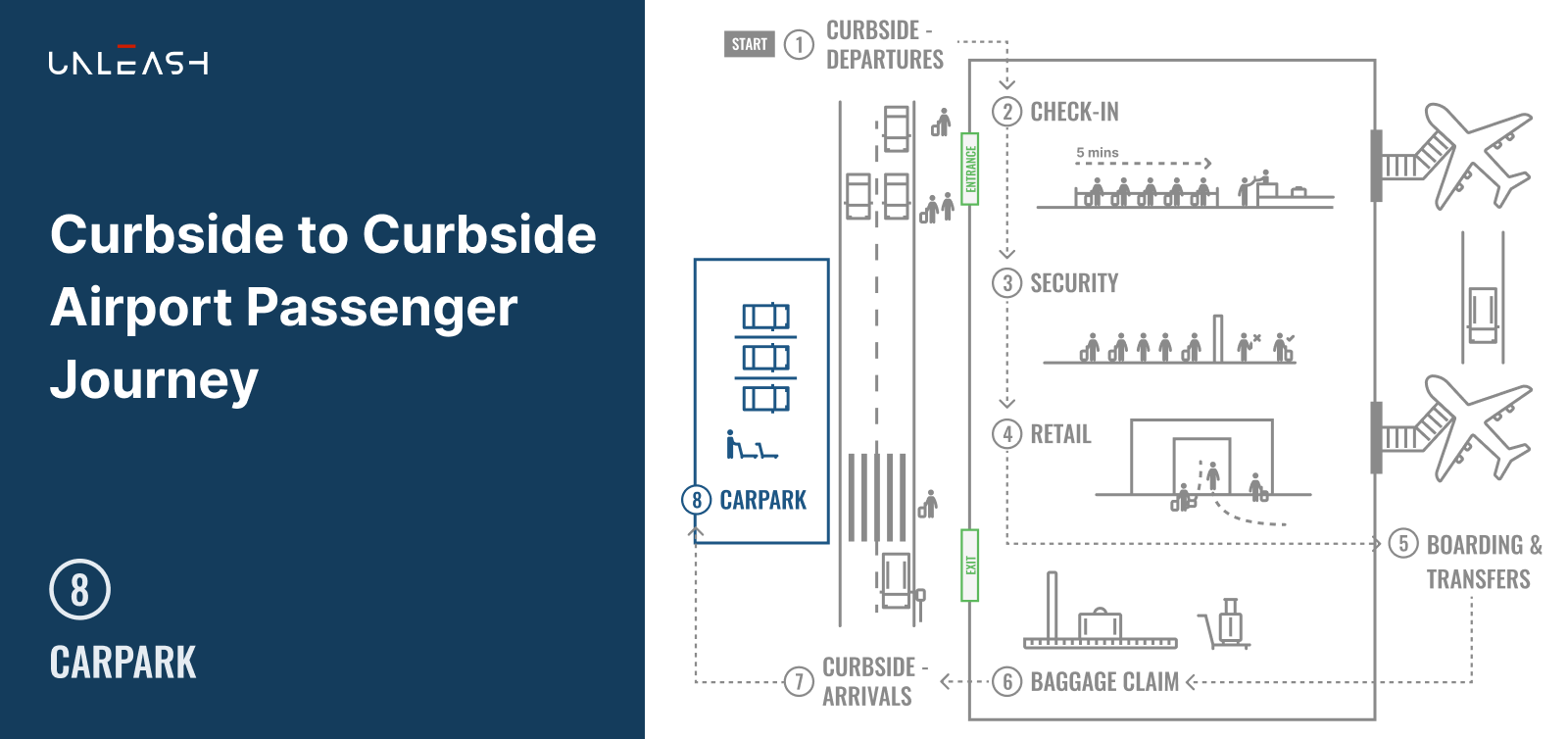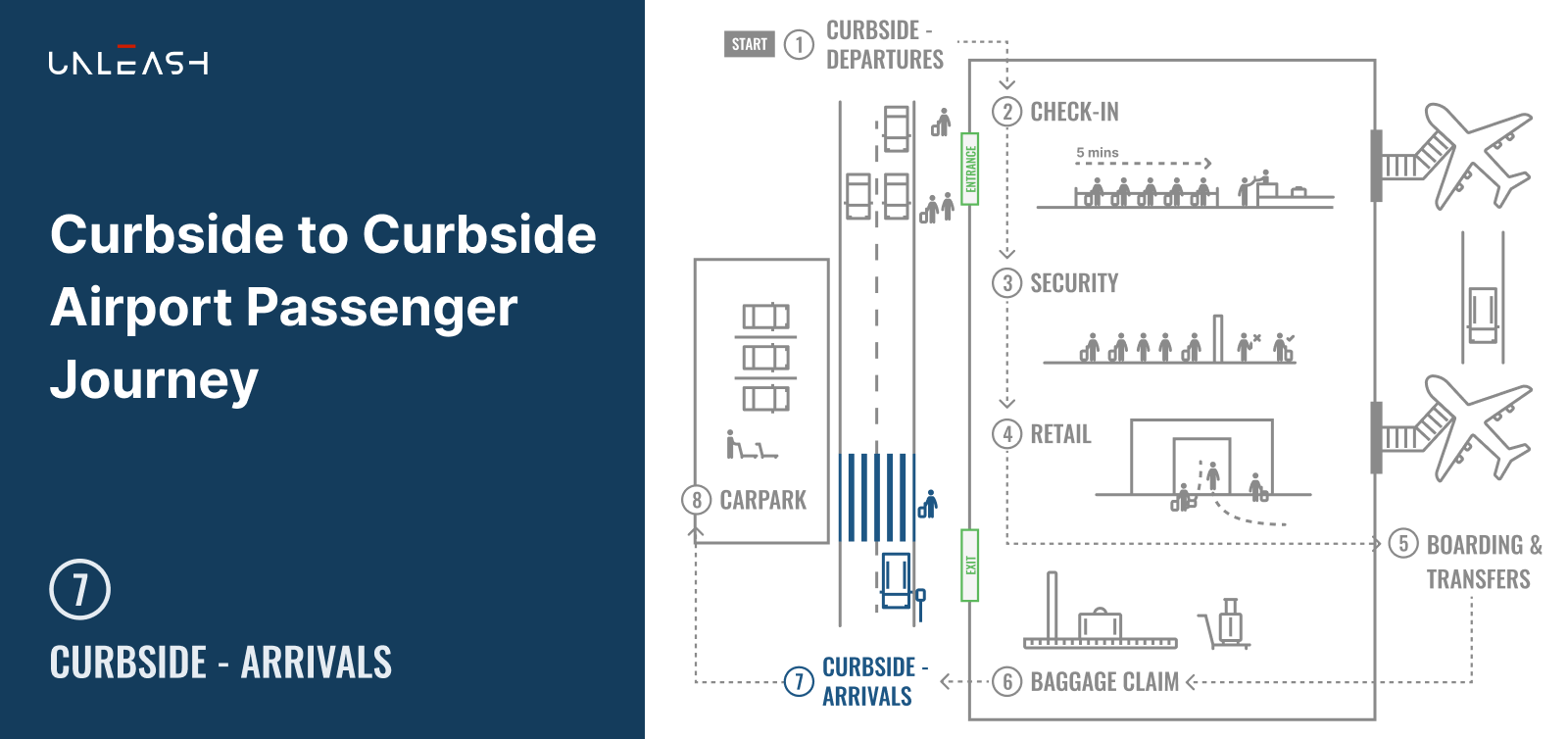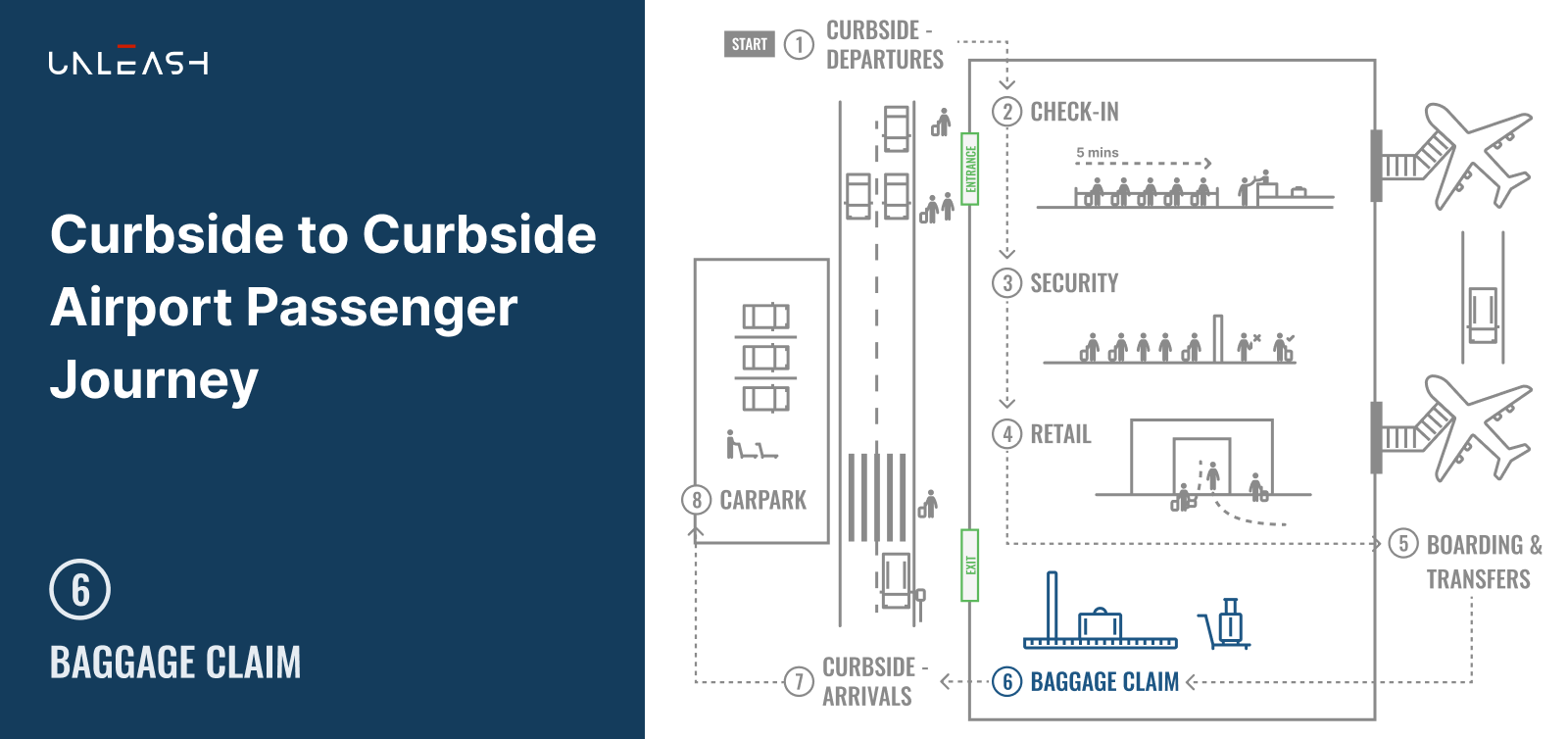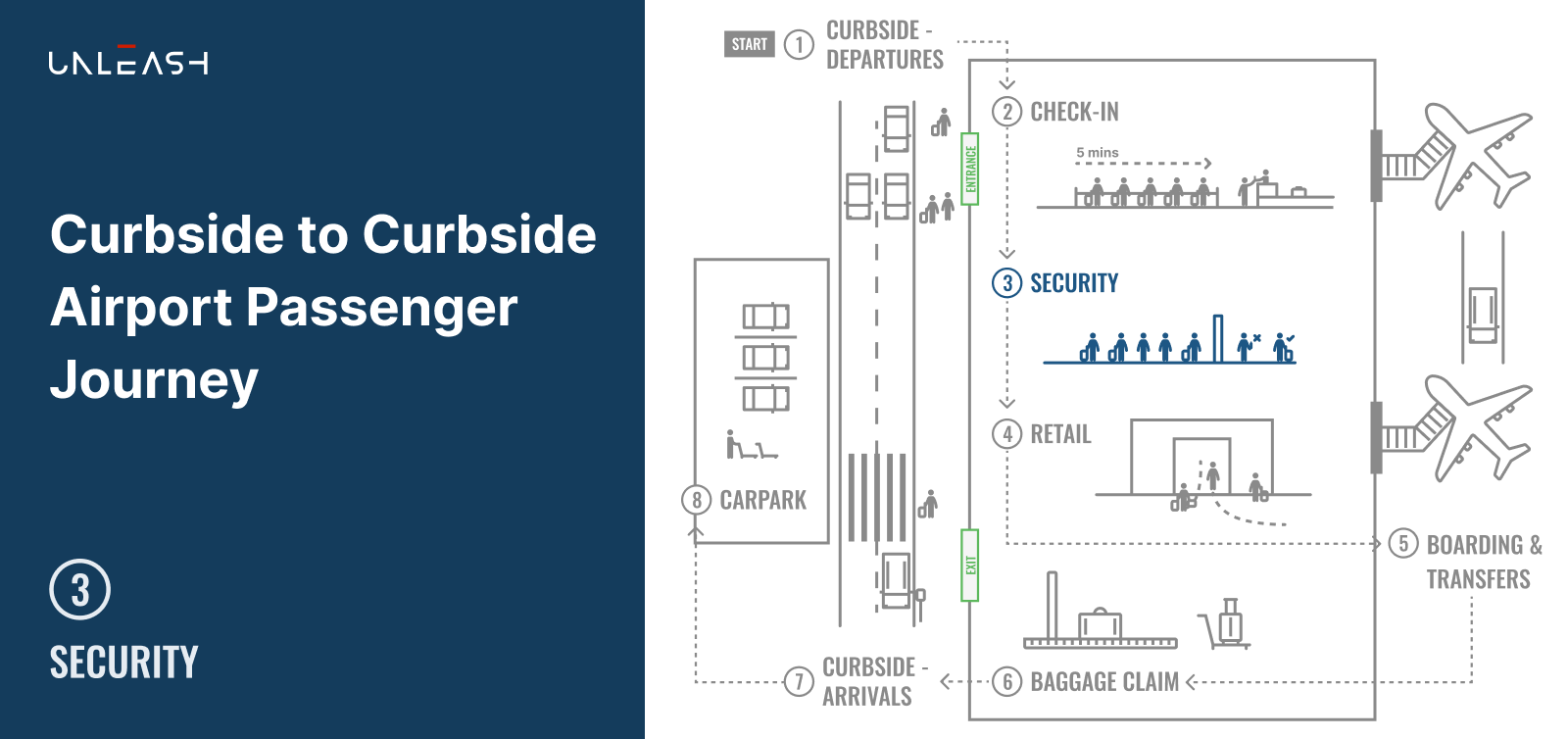Computer Vision for Airport Operations - Part 8 'Carpark'
Rounding up our exclusive airport operations series, where we have shared details of our computer vision Use Cases within each stage of the Airport Passenger Journey. In today's final email, we take a look at Part 8, 'Carparks' and how to streamline and enhance the customer experience.
Curbside to Curbside Airport Passenger Journey
Airport Passenger Journey Workflow - Part 8: Carpark
Part 8 - Carpark
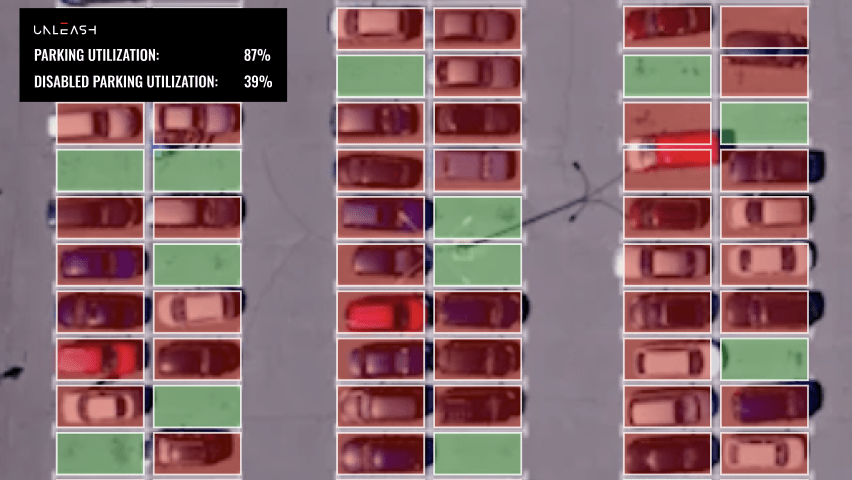
Review car park utilization with a breakdown between disabled and regular parking
Capacity and Increased Revenue
- Video System Management and Consolidation: Without expensive and bespoke parking management systems, managing cars and times spent on premises can be a challenge to navigate. Use computer vision to look at capacity at a glance.
- Dwell Times and Identification of 'Overstays': Identify which spots are being utilized and for how long. Use computer vision to understand the dwell time of the cars in your precinct and charge accordingly.
- Vehicle Classification and Increased Revenue: With image classification, the system can differentiate between different types of vehicles occupying each space. This allows for more granular control and pricing strategies if needed. Additionally, by classifying the image, the system can identify empty spaces even when partially blocked by other objects.
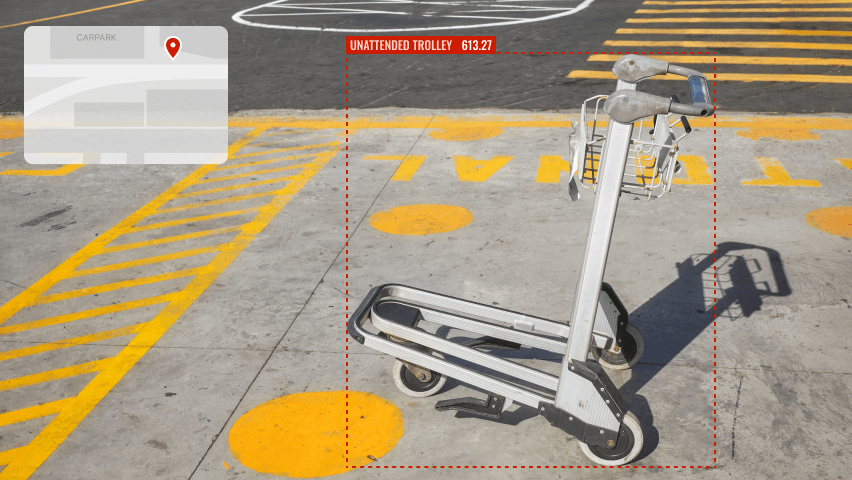
Automatically map live trolley locations with visual identification from cameras
Trolley Identification
Inter-Terminal Transportation
- Improved Efficiency and Customer Experience: AI and computer vision can identify trolleys in real-time, both within the car park and outside the terminal. This information can be displayed on digital signage or integrated into airport apps, guiding passengers directly to available trolleys.
- Reduced Trolley Misplacement and Theft: AI trolley tracking with computer vision can pinpoint trolleys outside designated areas. This allows for targeted retrieval efforts and potentially discourages theft by identifying trolleys leaving the airport perimeter.
- Optimized Trolley Distribution and Maintenance: AI can analyze data to identify areas with frequent trolley shortages and optimize trolley distribution accordingly. Additionally, computer vision can be used to identify damaged trolleys requiring maintenance, allowing for proactive repairs and ensuring a consistently functional fleet.
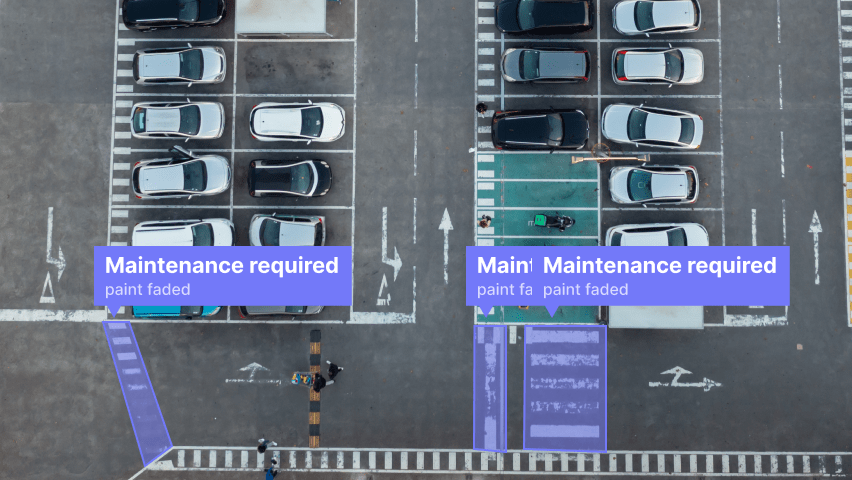
Track areas of interest and intervene early to reduce repair costs
Maintenance
- Predictive Maintenance: Computer vision can be used to inspect the parking lot for problems such as pavement cracks, damaged lighting or malfunctioning parking meters. AI algorithms can analyze the captured images and identify potential issues early on. This allows for targeted maintenance before problems worsen, saving on repair costs and extending the lifespan of parking lot infrastructure.
- Reduced Labor Costs: Routine inspections of vast parking lots can be time-consuming and labor-intensive. AI and computer vision can automate a significant portion of this process. Cameras with object detection capabilities can be used to identify overflowing trash cans, damaged signage or graffiti. This allows maintenance crews to prioritize tasks and focus on areas requiring immediate attention, saving on labor costs.
- Improved Resource Allocation: By analyzing data on maintenance requests and repairs, AI can identify areas within the parking lot that are more prone to damage or require frequent attention. This allows for proactive resource allocation, potentially deploying stronger materials in high-wear areas or scheduling more frequent inspections for specific zones. This optimized approach can minimize repair costs and extend the overall lifespan of the parking lot.
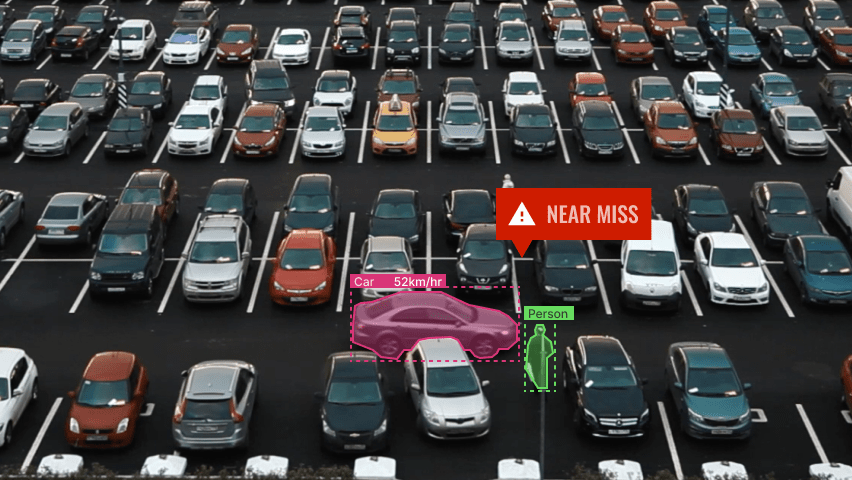
Monitor problem areas and report on time and place of near-miss events
Security and Safety
- Proactive Crime Deterrence and Intervention: AI-powered video analytics can be a powerful tool for deterring criminal activity in airport car parks. Cameras equipped with computer vision algorithms can be trained to detect suspicious behavior, like loitering individuals, attempted break-ins or unauthorized vehicle tampering. Real-time alerts can be sent to security personnel allowing for quicker response.
- Improved Monitoring of Unattended Vehicles: Airport parking lots often contain high-value vehicles left unattended for extended periods. AI and computer vision can be used to continuously monitor these vehicles. The system can detect suspicious activity around parked cars, like unauthorized individuals approaching or attempts to tow vehicles.
- Enhanced Pedestrian Safety: Busy airport car parks can be dangerous for pedestrians, especially with large manoeuvring vehicles. AI-powered video monitoring with computer vision can be used to identify potential safety hazards. The system can detect pedestrians in designated vehicle lanes or children wandering unsupervised. Real-time alerts can warn drivers and prompt security personnel to intervene, preventing accidents and ensuring the safety of everyone using the car park.
Learn more →
← Go to Part 7, 'Curbside Arrivals'


